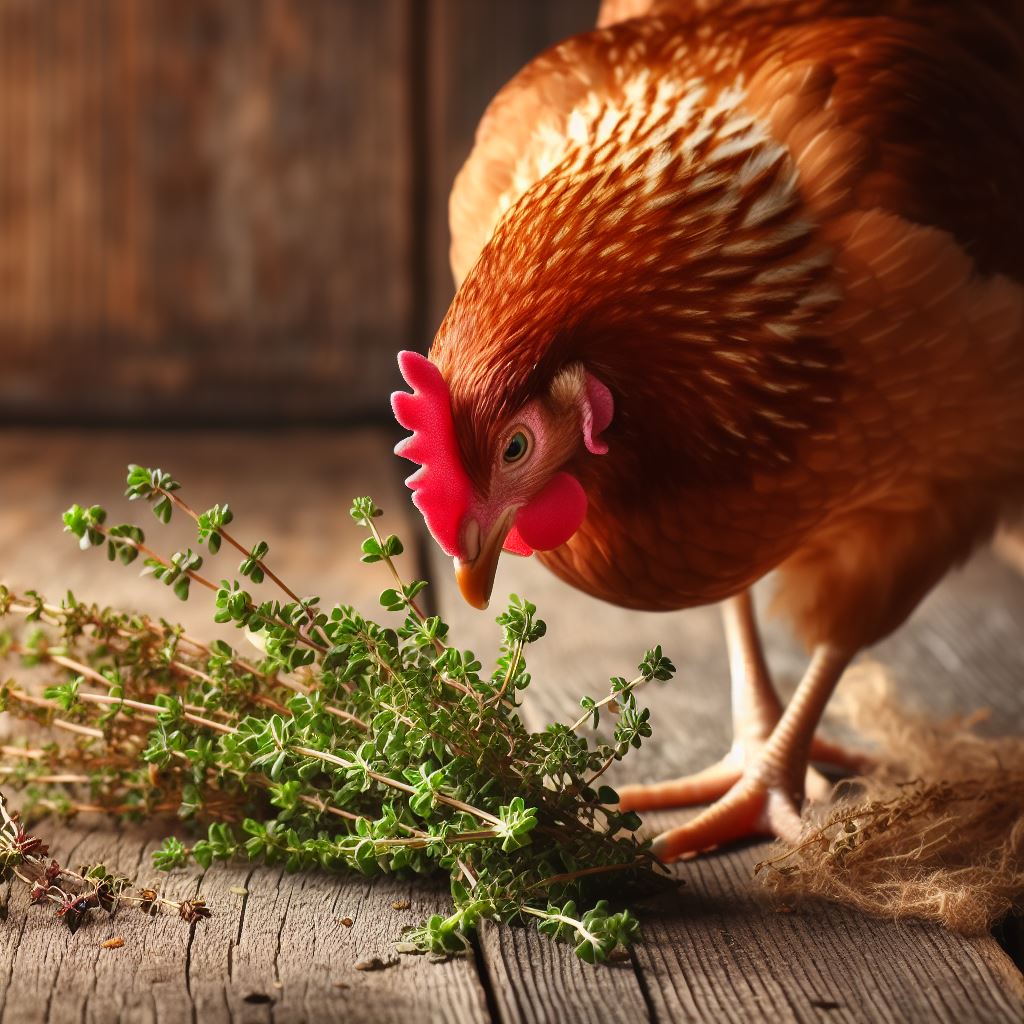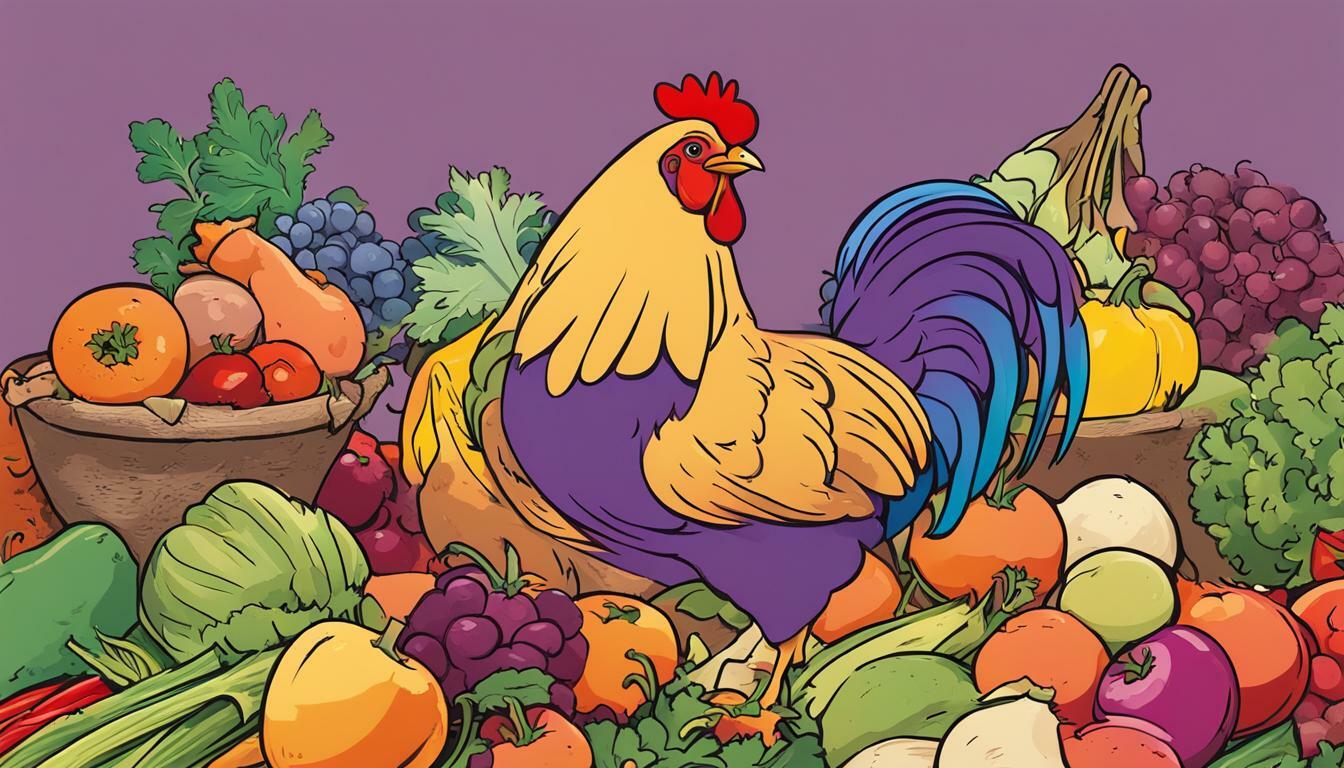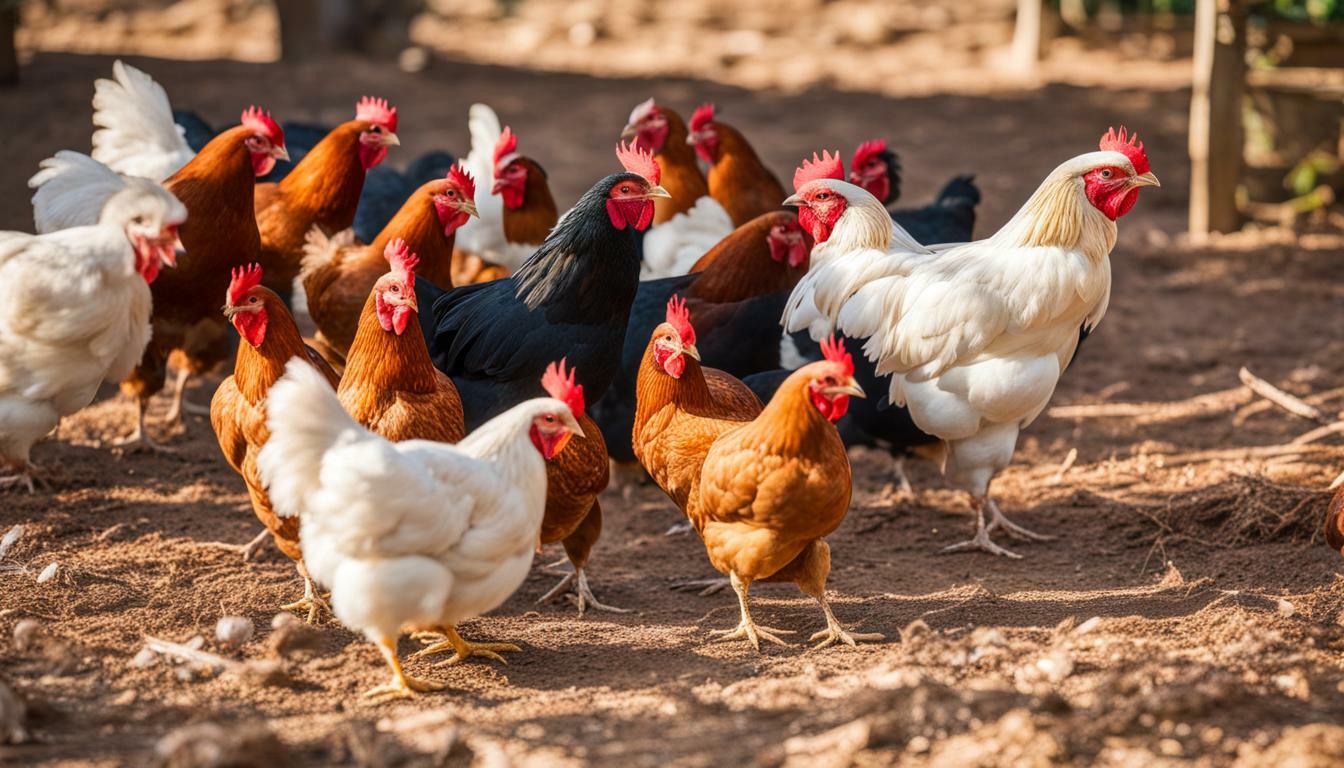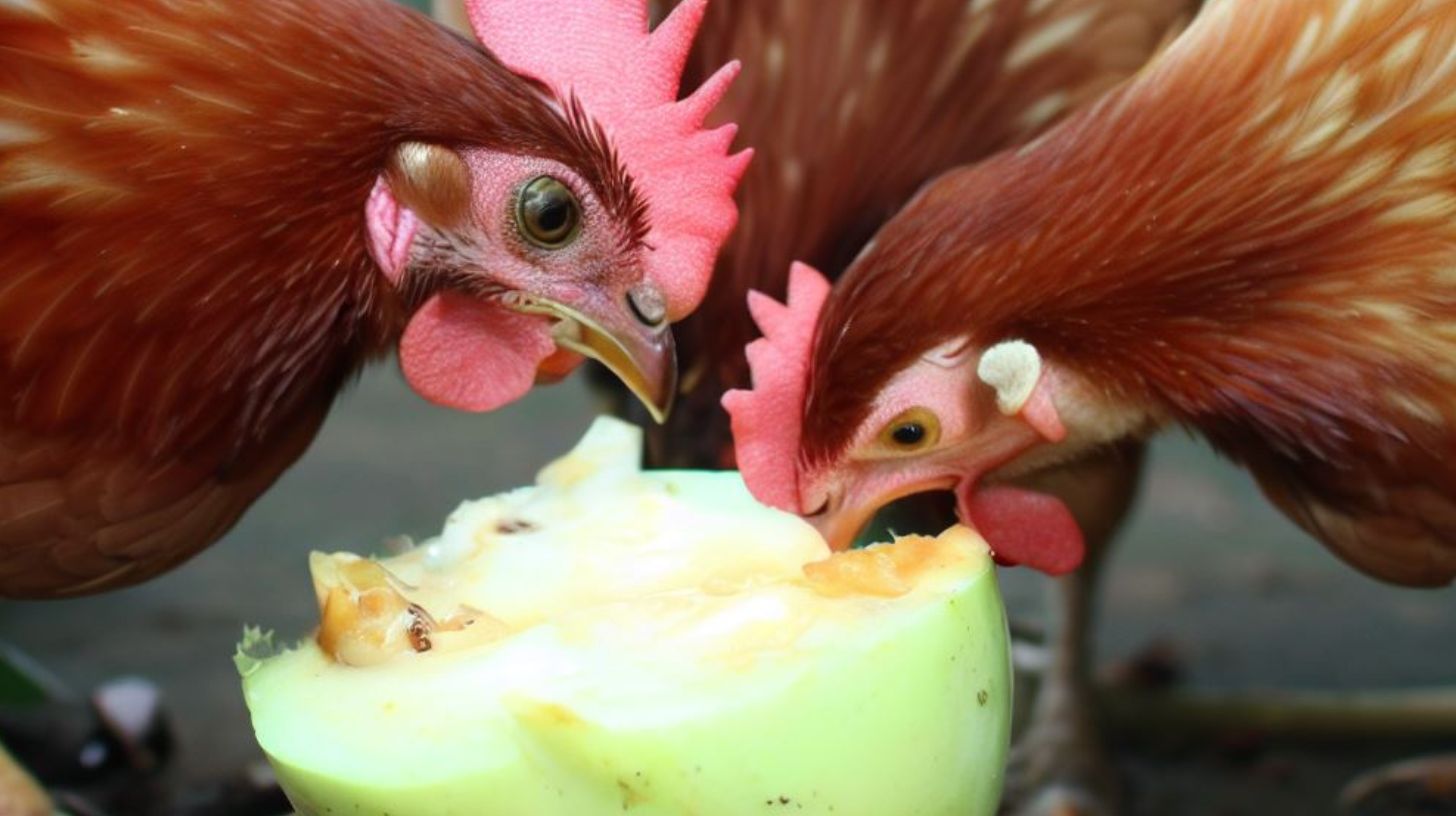Can Chickens Eat Bell Peppers? Benefits and Safe Feeding Tips
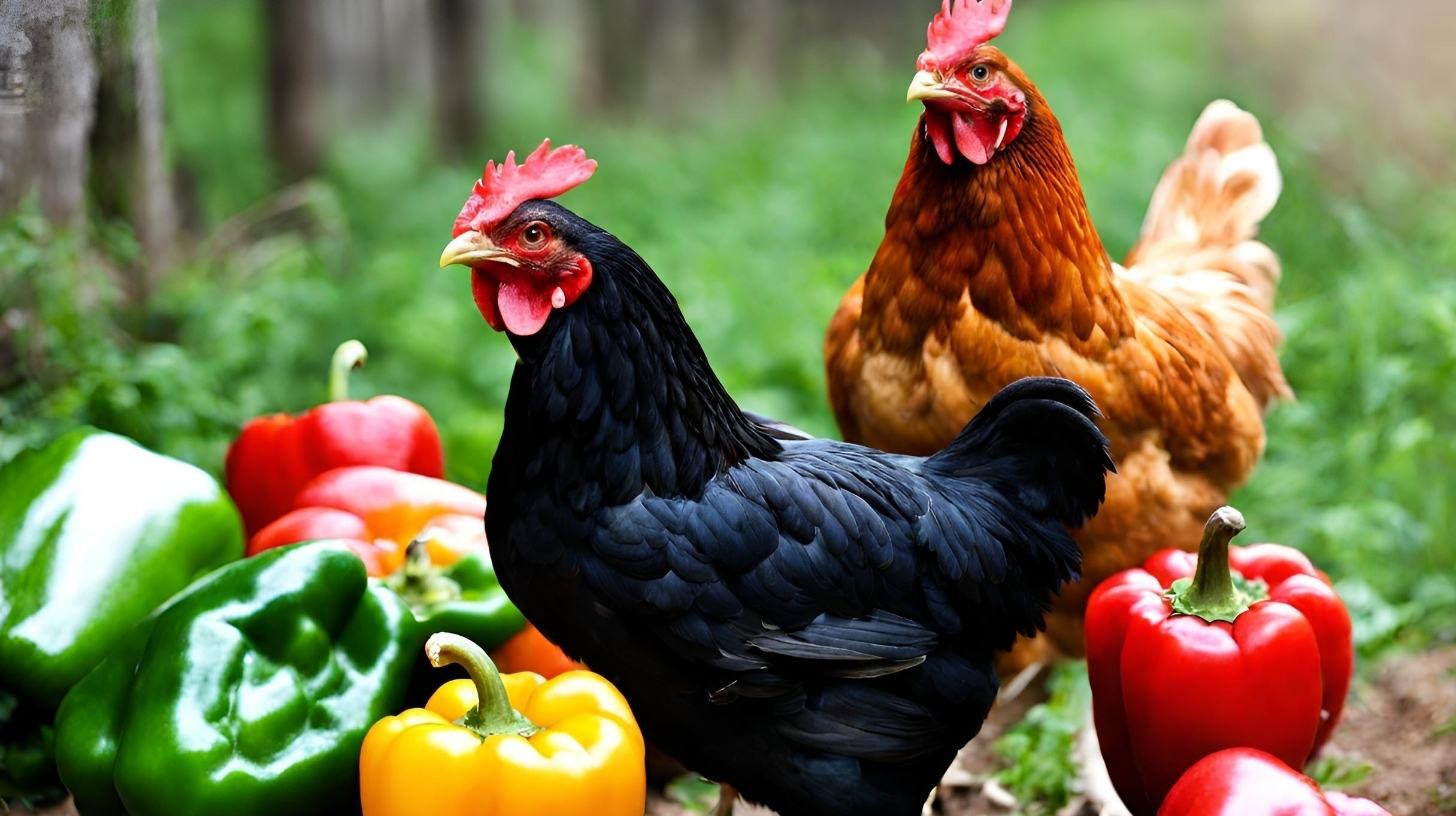
Table of content:
Bell peppers are a nutritious vegetable that can provide many benefits for backyard chicken flocks. However, there are some important considerations when feeding bell peppers to chickens. This comprehensive guide covers everything you need to know about feeding bell peppers to chickens.
Key Takeaways:
- Bell peppers are safe and nutritious for chickens in moderation. They contain vitamin C, vitamin A, and antioxidants.
- Too many bell peppers can cause loose droppings in chickens. Feed no more than 1-2 small peppers per chicken per week.
- Avoid feeding chickens spoiled or moldy peppers, spicy varieties, and pepper plant leaves/stems which can be toxic.
- Chop peppers into small pieces and mix into feed for easiest consumption. Offer fresh water.
- Green, red, yellow, orange bell peppers are all safe for chickens.
Chickens can safely eat bell peppers as part of a balanced diet. Bell peppers provide chickens with important vitamins, minerals, and antioxidants. However, chickens have small digestive systems so bell peppers should be fed in moderation.
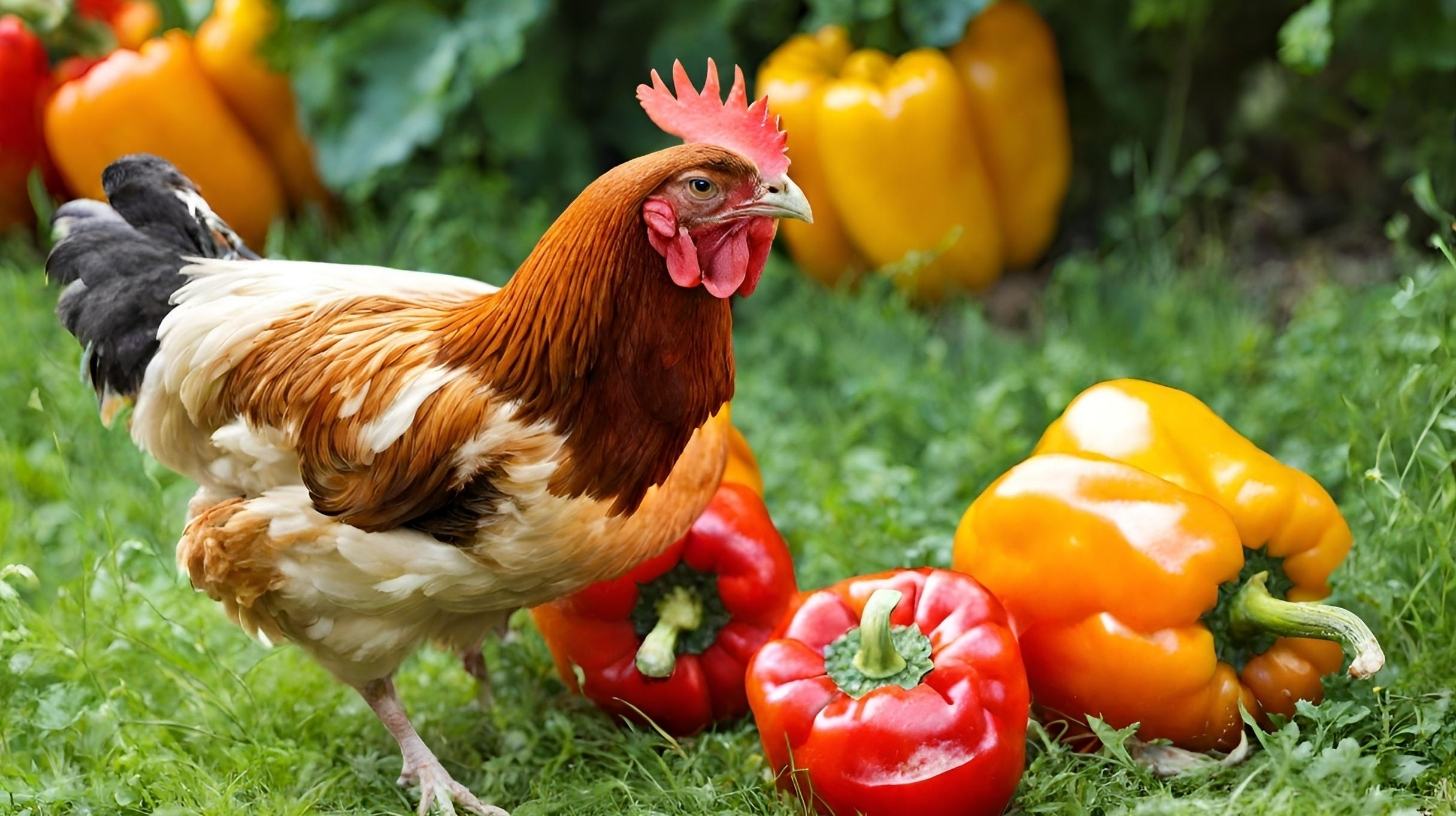 Are Bell Peppers Good for Chickens?
Are Bell Peppers Good for Chickens?
Bell peppers are in the nightshade family of plants, which also includes tomatoes, potatoes, and eggplant. The colorful varieties of bell peppers popular in cooking are generally safe and healthy for chickens to eat.
These sweet, mild peppers contain beneficial nutrients:
- Vitamin C: Supports immune function and collagen production.
- Vitamin A: Important for vision, growth, and egg production.
- Beta-carotene: An antioxidant that converts to vitamin A.
- Vitamin B6: Supports nerve cell function.
- Folate: Needed for DNA synthesis and red blood cell formation.
Additionally, bell peppers provide chickens with trace minerals like iron, calcium, and potassium. The bright colors of red, yellow, and orange peppers come from antioxidant pigments called carotenoids.
In moderation, the nutrition in bell peppers can complement the diet of backyard chickens. The vegetables add variety and appeal. Chickens eagerly devour chopped peppers mixed into their feed.
What Vegetables Can Chickens Eat?
In addition to bell peppers, chickens can eat a wide variety of fresh fruits and vegetables as supplements to their regular feed:
- Leafy greens – kale, lettuce, spinach
- Other veggies – broccoli, carrots, celery, squash, sweet potatoes
- Fruits – apples, bananas, grapes, watermelon
These fresh, natural foods provide chickens with phytonutrients, minerals, and fiber. Offer a diverse mix for balanced nutrition. Always introduce new foods slowly.
Chop produce into small, chicken-sized bites. Avoid slimy, moldy, or spoiled vegetables. Do not feed chickens raw potato peels or green potato skins, which contain solanine toxin.
Can Chickens Have Bell Peppers?
Yes, chickens can safely eat all varieties of bell peppers. The most common types are:
- Green bell peppers – Unripe, they have a slightly bitter flavor.
- Red bell peppers – Fully ripe and sweet.
- Yellow/orange bell peppers – Sweet, mild flavor.
- Purple bell peppers – Fruity, crisp flavor.
These large, rounded peppers with crunchy flesh are all safe for chickens when chopped. Avoid feeding chickens hot varieties like jalapenos which can irritate their digestive system.
Spicy or heavily seeded bell peppers may cause loose droppings. Introduce peppers gradually and monitor chicken manure for diarrhea.
Safe Vegetables for Chickens
When selecting vegetables from the garden to share with backyard chickens, focus on these safe, nutritious options:
- Carrots – Rich in vitamin A.
- Celery – Provides hydration.
- Sweet corn – High in vitamin C.
- Cucumber – Helps with hydration.
- Fennel – Supports egg production.
- Kale – Leafy green with calcium and carotenoids.
- Peas – Contains vitamin K, phosphorus, protein.
- Green beans – Beneficial vitamins and minerals.
- Pumpkin – Rich in vitamin A with beta carotene.
Scrub vegetables clean and chop into small pieces before feeding to chickens. Introduce one new food at a time and monitor for any digestive issues. Provide fresh water. Veggies should comprise no more than 10-15% of a chicken’s overall diet.
Avoid raw green potato skins, dried beans, and rhubarb leaves which can be poisonous to chickens. Onions and garlic are not recommended either.
 Benefits of Feeding Chickens Peppers
Benefits of Feeding Chickens Peppers
Peppers make a nutritious, low-calorie treat for chickens with many potential benefits:
- Vitamins A and C – Support egg production and immune function. Chickens cannot make their own vitamin C.
- Carotenoids – The red, yellow pigments act as antioxidants. Bell peppers have 10 times more vitamin C than citrus fruits.
- Bioflavonoids – Compounds that contribute to health and vitality.
- Fiber – Promotes digestion and gut health.
- Moisture – Hydrates chickens.
- Fun treat – Adds variety and enrichment to their diet.
In free-range environments, chickens will naturally forage for fruits and vegetables. Supplementing their feed with garden produce can mimic this natural behavior.
Red Pepper Chicken Feed
For the easiest consumption, chop red peppers finely and mix into chickens’ regular feed. This masks the texture while ensuring the flock eats the nutrition-packed produce.
Try mixing a few tablespoons of diced red bell pepper per chicken into feed. Start with small amounts and monitor to ensure the peppers do not cause adverse reactions.
The bright color of red peppers comes from antioxidants like capsanthin and beta-carotene. These nutrients will naturally color the egg yolks from chickens fed red peppers. This is safe, though may be an unwanted result for some flock owners.
Chickens and Colored Veggies
In addition to red bell peppers, other brightly colored fruits and vegetables contain antioxidants that can tint chicken egg yolks:
- Paprika – Adds yellow/orange hues.
- Pumpkin – Imparts a rich golden orange color.
- Carrots – Produces darker yellow yolks.
- Tomatoes – Reddish-orange yolk coloring.
- Spinach – Darkens yolks to a deep yellow-green.
These slight changes are harmless, but flock owners wanting traditional egg coloring should avoid overfeeding pigmented produce. Stick to 1-2 servings per chicken per week of red bell peppers or other colorful fruits and veggies.
Feeding Colored Veggies to Chickens
To optimize nutrition while minimizing colorful egg yolk changes, follow these tips for feeding chickens fruits and vegetables:
- Gradually introduce new produce over 3-5 days.
- Observe chickens’ droppings for adverse reactions.
- Limit each chicken to 1-2 servings of produce daily.
- Chop into small, bite-sized pieces.
- Mix into regular feed for easiest consumption.
- Provide fresh, clean water.
- Reduce pigmented foods if desired egg color changes.
A serving size for most vegetables is around 1/8 to 1/4 cup per large chicken. Fruits can be fed less often, 2-3 times per week. Flock owners can use the vivid egg yolk colors as an indicator they may need to reduce pigmented produce.
Chickens Eating Colored Peppers
Bell peppers of any color are nutritious and appealing additions to backyard chickens’ diets. Follow basic guidelines to safely feed chickens colored bell peppers:
- Start with a small quantity and gradually increase.
- Dice peppers into tiny pieces for easier eating.
- Mix into chickens’ feed for consistent intake.
- Avoid heavily seeded or spicy varieties.
- Limit peppers to 1-2 times per week.
- Monitor chicken droppings for adverse reactions.
- Reduce quantities if eggs start changing colors.
By optimizing the amount, texture, and delivery method of bell peppers, flock owners can provide their chickens with excellent nutrition from produce without unwanted consequences. Pay attention to each bird’s reaction.
FAQs
Can chickens eat bell peppers every day?
It’s best to limit bell peppers to 1-2 times per week for chickens. The high water content and sugars in peppers can cause loose, watery droppings if overfed.
Are green peppers safe for chickens?
Yes, green bell peppers are safe for chickens to eat. They are less ripe than other colored varieties but still provide beneficial nutrients like vitamin C. Introduce gradually.
Do chickens like yellow peppers?
Chickens enjoy eating mild, sweet yellow bell peppers. The bright color attracts their attention. Chop the thick flesh into small pieces before feeding to chickens.
What if my chicken’s droppings are runny after eating peppers?
Back off on the quantity of peppers if they cause diarrhea. Feed bland foods like rice until droppings return to normal. Make sure the flock has abundant fresh water as peppers can cause dehydration.
Will red peppers change yolk color?
The red pigments in peppers may naturally tint egg yolks. Limit red bell peppers to 1-2 times per week to prevent overly colorful yolk color changes if undesired. Adding paprika or pumpkin can also color yolks.
Conclusion
When fed properly, bell peppers are a nutritious and enjoyable addition to backyard chickens’ diets. The vitamins and antioxidants can provide health benefits. Be sure to introduce peppers slowly, limit quantity, and monitor chickens’ droppings. By following best practices, flock owners can safely feed chickens bell peppers and other colorful produce as part of their overall balanced nutrition.
Welcome. I’m Adreena Shanum, the proud owner of this website, and I am incredibly passionate about animals, especially poultry. I founded adreenapets.com as a labor of love, stemming from my desire to share my knowledge and experiences with poultry enthusiasts worldwide.

